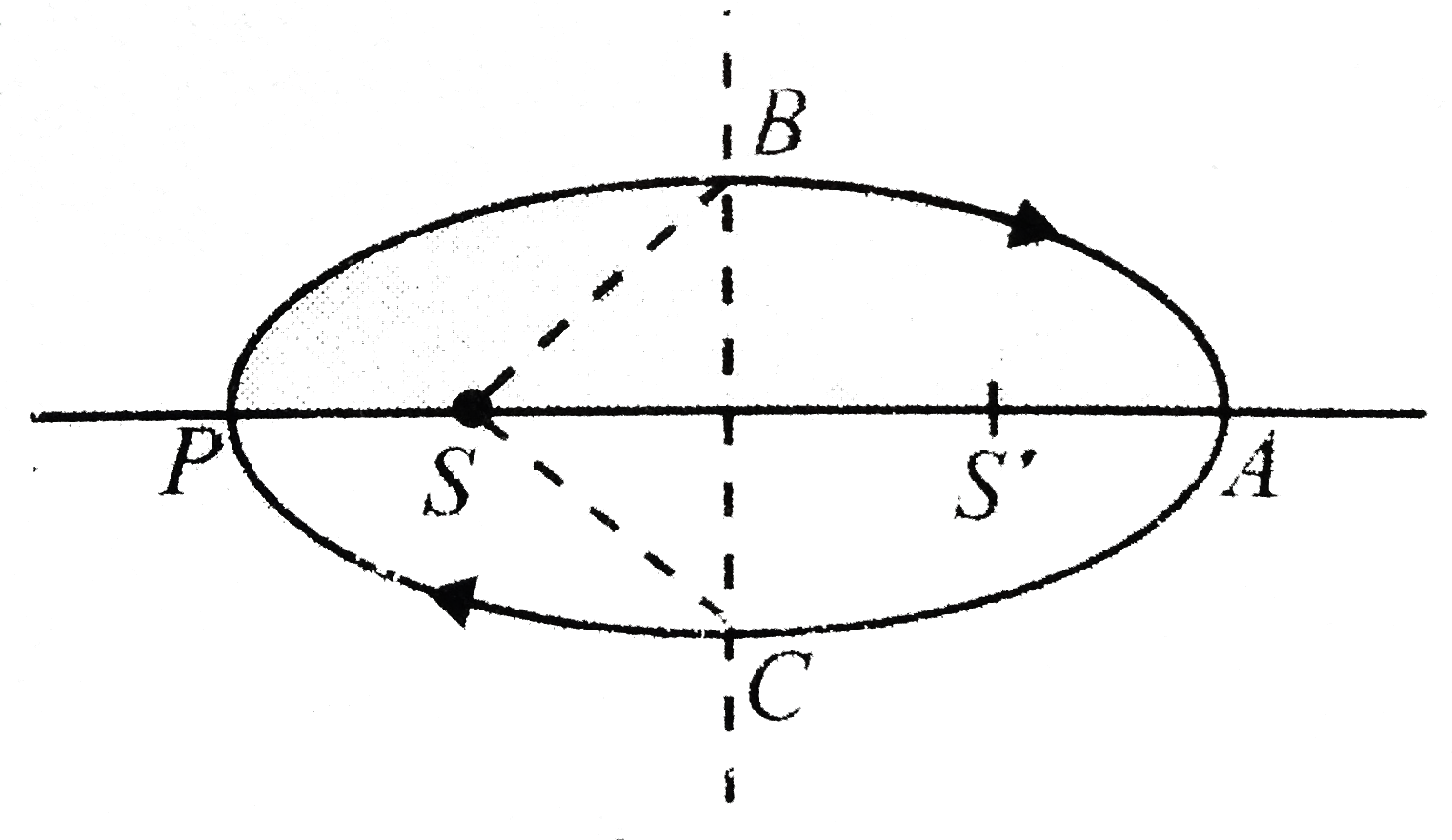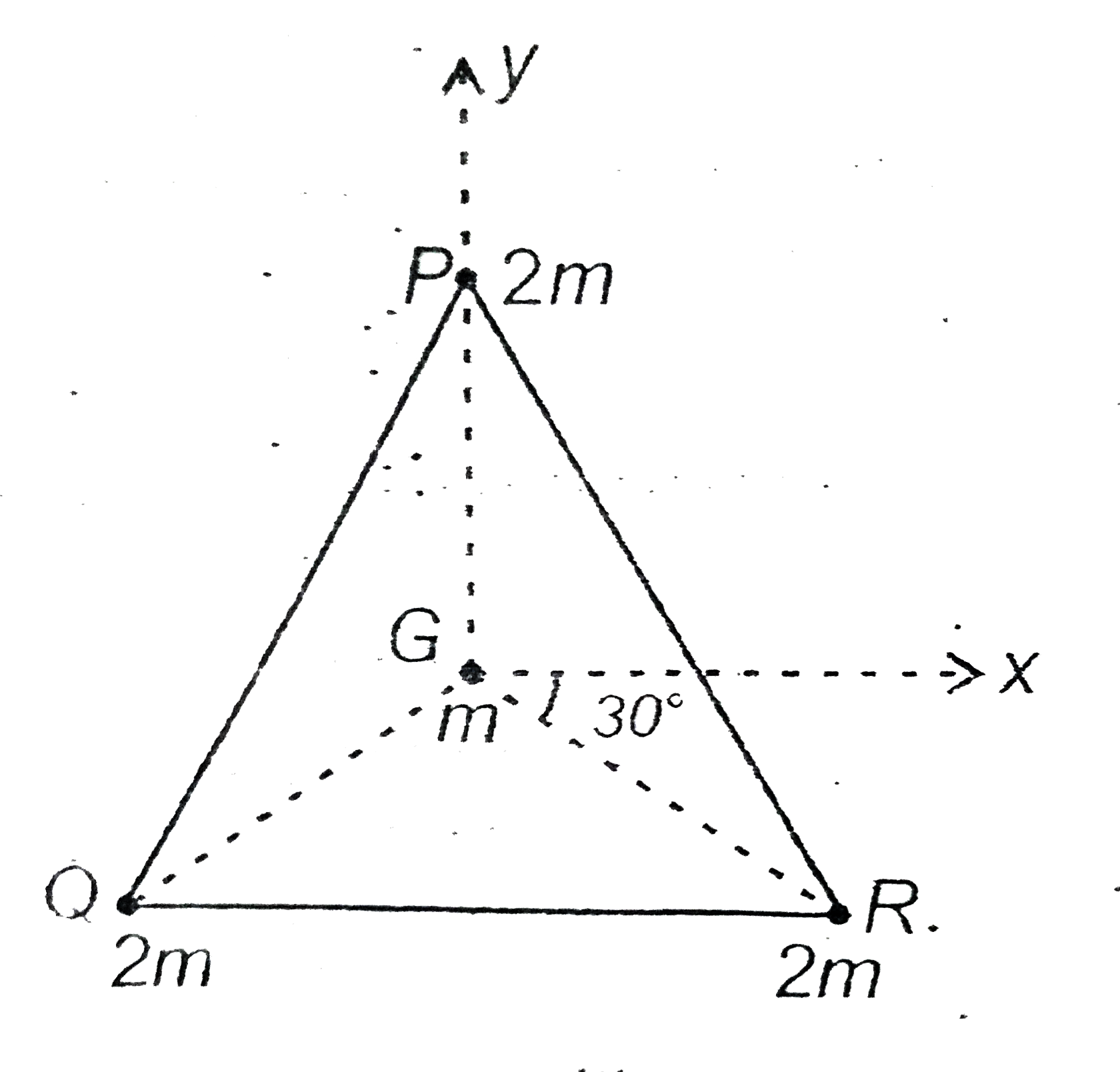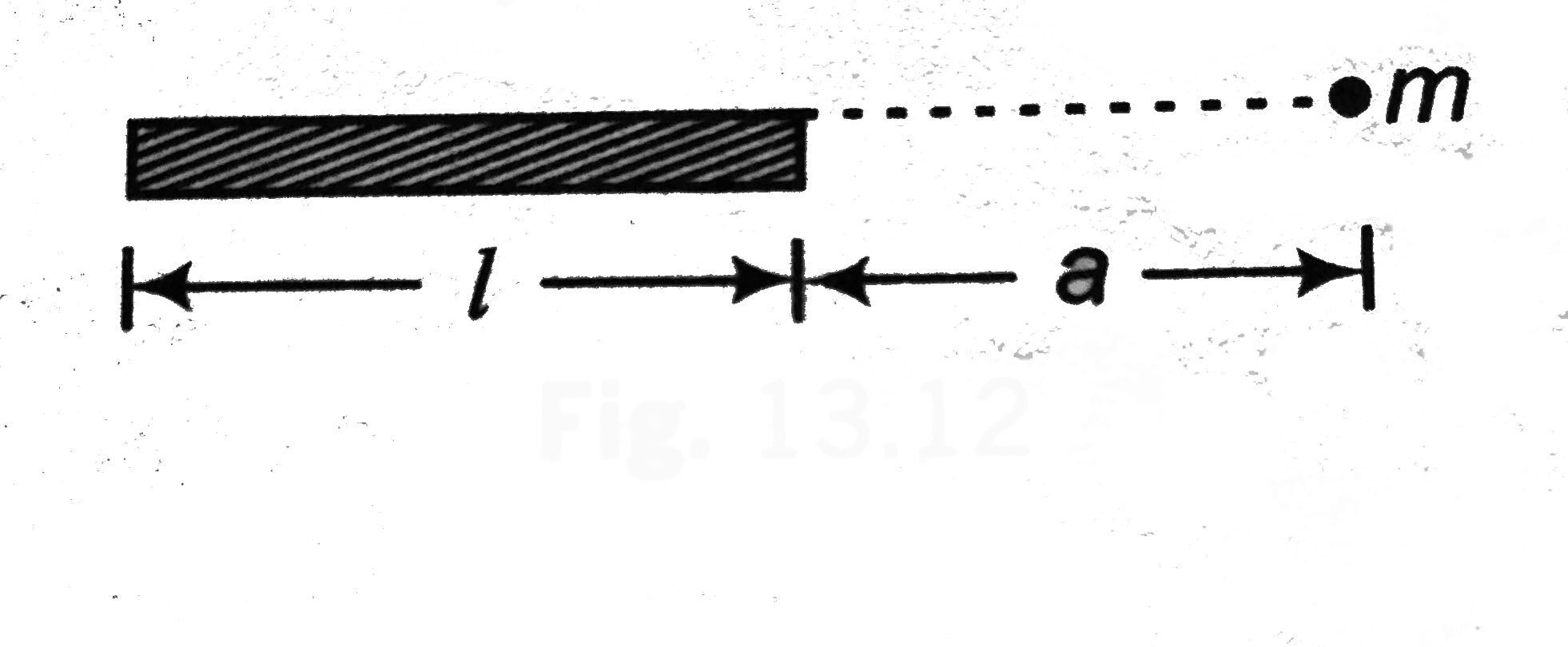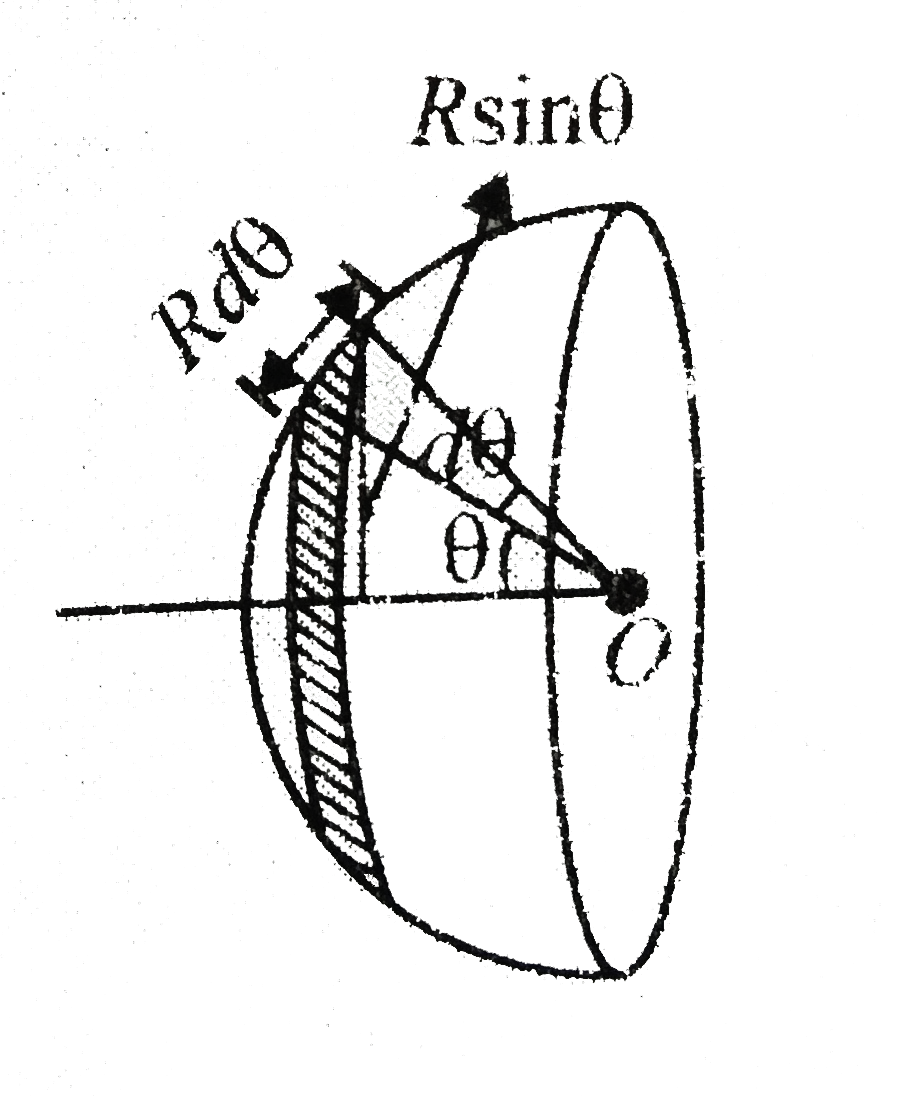Illustration from CENGAGE PHYSICS (HINGLISH) GRAVITATION for Class 11
| Class 11 | PHYSICS |
| Chapter | GRAVITATION |
| CENGAGE PHYSICS (HINGLISH) | Illustration |
| Medium | English |
| Academic Year | 2023-2024 |
Question 5
The mass of planet Jupiter is 1.9×107kg and that of the Sun is 1.9x1030kg. The mean distance of Jupiter from the Sun is 7.8×1011m. Calculate te gravitational force which Sun exerts on Jupiter. Assuming that Jupiter moves in circular orbit around the Sun, also calculate the speed of Jupiter G=6.67×10−11Nm2kg−2.View SolutionQuestion 9
Three particles, each of mass m, are situated at the vertices of equilateral triangle of side length a. The only forces. It is desired that each particle moves in a circle while maintaining the original mutual speration a. Find the intial velocity that should be given to each particle and also the time period of the circular motion.View SolutionQuestion 10
Figure shows a spherical cavity inside a lead sphere. The surface of the cavity passes through the centre of the sphere and touches the right side of the sphere. The mass of the sphere before hollowing was M. With what gravitational force does the hollowed out lead sphere attract a particle of mass m that lies at a distance d from the centre of the lead sphere on the straight line connecting the centres of the spheres and of the cavity.
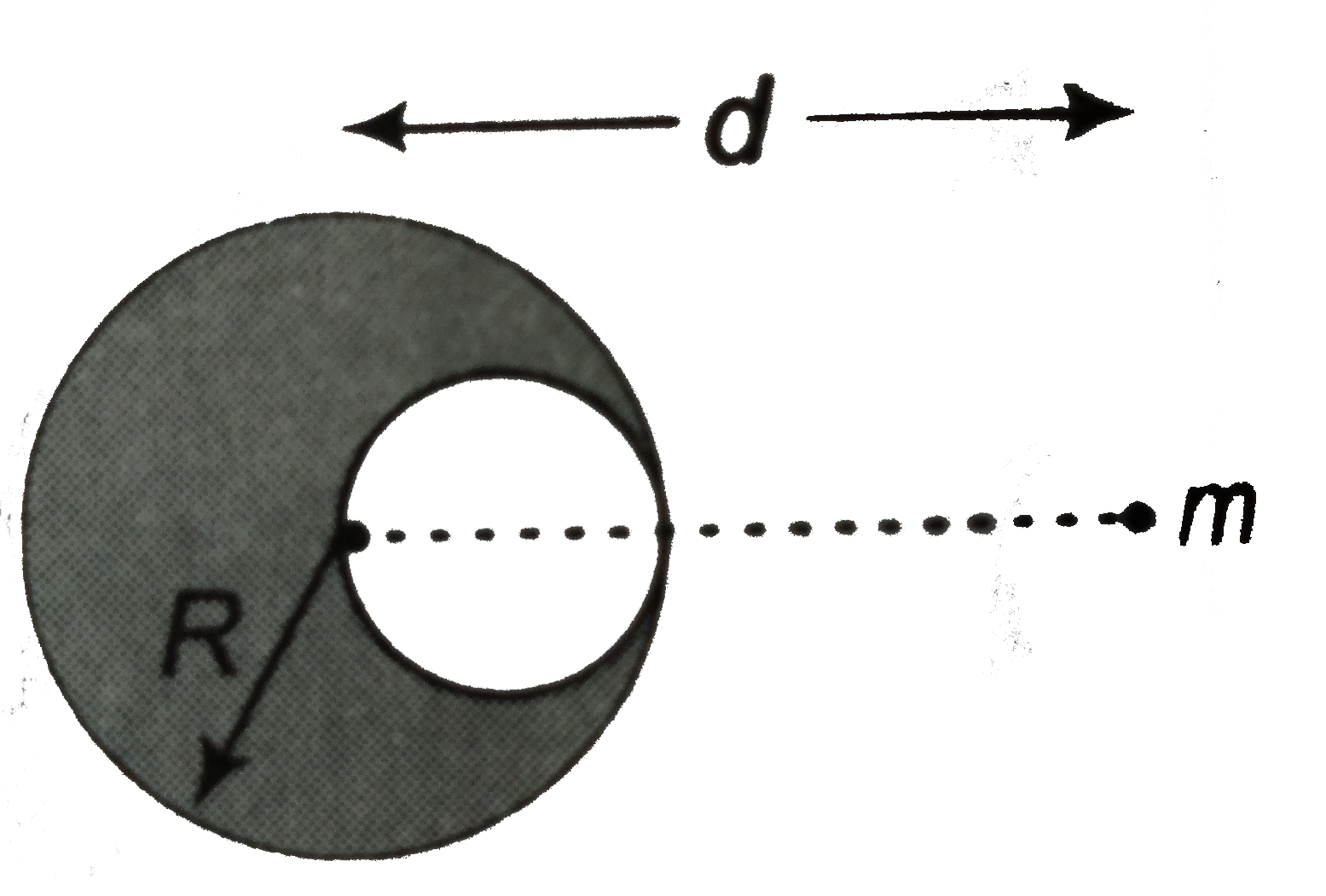 View Solution
View SolutionQuestion 12
In a double star, two stars (one of mass m and the other of mass 2m) distance d apart rotate about their common centre of mass., Deduce an expressioin for the period of revolution. Show that te ratio of their angular momenta about the centre of mass is the same as the ratio of their kinetic energies.View SolutionQuestion 33
Distance between the centres of two stars is 10a. The masses of these stars are M and 16M and their radii a and 2a respectively. A body of mass m is fired straight from the surface of the larger star towards the surface of the smaller star. What should be its minimum initial speed to reach the surface of the smaller star? Obtain the expression in terms of G, M and a. View SolutionQuestion 39
A rocket starts vertically upward with speed v0. Show that its speed v at height h is given by v20−v2=2hg1+hR
where R is the radius of the earth and g is acceleration due to gravity at earth's suface. Deduce an expression for maximum height reachhed by a rocket fired with speed 0.9 times the escape velocity.View SolutionQuestion 40
For a particle projected in a transverse direction from a height h above earth's surface, find te minimum initial velocity so that it just grazes the surface of earth such that path of this particle would be an ellipse with centre of earth as the farther focus, point of projection as the apogee and a diametrically opposite point on earth's surface as perigee.View SolutionQuestion 45
Assume the radius of the earth to be 6.4×106m
a. Calculate the time period T of a satellite on equational orbit at 1.4×10em above the surface of the earth.
b. What is the speed of the satellite in this orbit?
c. If the satellite is travelling in the same direction as the rotation of the earth i.e. west to east, what is the interval between two successie times at which it will appear vertically overhead to an observed at a fixed point on the equator?View SolutionQuestion 46
Two satellites A and B of equal mass move in the equatorial plane of the earth, close to earth's surface. Satellite A moves in the same direction as the of the rotation of the earth while satellite B moves in the opposite direction. Calclate the ratio of the kinetic energy of B of that of A in the reference frame fixed to the earth (g=9.8ms−2 and radius of the earth =6.37×106km)View SolutionQuestion 48
A satellite ils launched into a circular orbit 1600km above the surface of the earth. Find the period of revolution if the radius of the earth is R=6400km and the acceleration due to gravity is 9.8ms−2. At what height from the ground should it be launched so that it may appear stationary over a point on the earth's equator?View Solution

